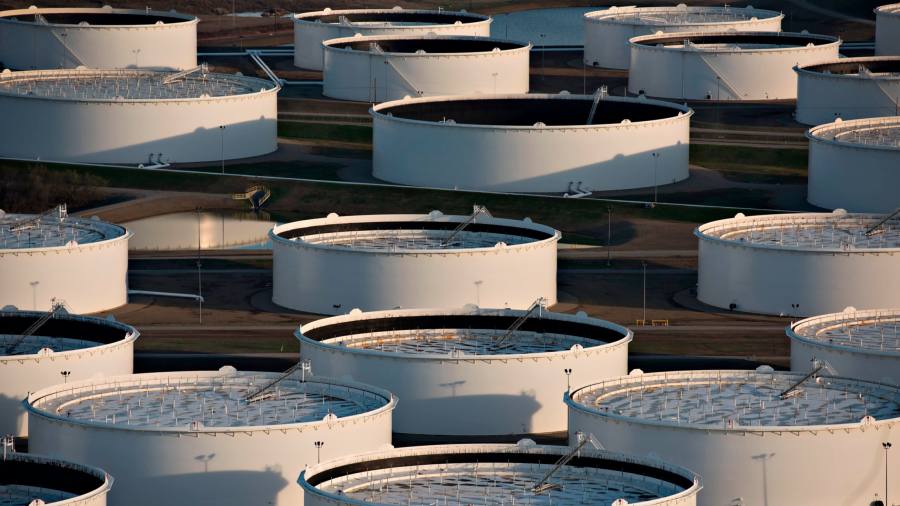Receive free Oil updates
We’ll send you a myFT Daily Digest email rounding up the latest Oil news every morning.
The writer is director of research and co-founder at Energy Aspects
This year was supposed to be a golden opportunity for oil bulls, but it has proven as tricky a year to trade as any. China’s rebound from Covid-era lockdowns and the end of western governments’ strategic oil stock releases were meant to pave a one-way street to higher prices. Instead, the market is down by more than $10 a barrel at the halfway mark of the year.
The blame for lower oil prices is often placed on weak demand. The manufacturing recession in the western world has dented sentiment, as has China’s languishing property market. However, oil demand has been anything but weak. In the year to date, official data from government agencies and analyst OilX show global oil demand has grown by 2.5mn barrels a day year on year, exceeding our forecast by 0.3mn b/d.
Despite lower demand for some industrial oil products, consumer purchases are still strong, in part due to expansionary fiscal policy such as the US Inflation Reduction Act. The disappointment is all the more palpable among bulls as Opec+ producers have stepped in to curtail production time and again, with the latest cuts announced on Monday.
So why aren’t prices higher? We believe an under-appreciated culprit is the higher interest rates that have increased the cost of capital just as fears of a global recession lead businesses to reduce inventories.
For oil refineries and trading companies, the cost of holding oil in tanks has become much more expensive. And increased financing costs also mean that the penalty for being caught with unsold product (should a recession eventually cause demand to slow) is higher than before. This response by companies to higher interest rates, while understandable, leaves the market vulnerable to a shock, particularly as demand has proven resilient so far.
The world is emerging from more than a decade of zero-interest rate policy, which has bred complacency. The trading companies that grew rapidly over the past decade simply do not have the same experience of operating in a non-zero interest rate environment.
History is instructive. In the two decades leading up to the financial crisis there was a clear relationship between interest rates and the structure of the oil market. For each 1 percentage point increase in interest rates, crude stocks in the developed world decreased by 10mn barrels on average year on year — about the equivalent of a full day’s gasoline demand in the US at a time when global consumption was far lower.
During periods when oil contracts were backwardated — a market structure indicating higher prices for immediate delivery owing to strong demand — the drawdown of stocks would accelerate markedly when interest rates were rising.
The period around the turn of the millennium is arguably closest to today. From January 2000, the US started to raise rates while Opec began cutting output later the same year. Even stock markets were initially running hot, led by a few tech companies before the 2001 recession.
Over the same period, OECD oil inventories as reported to the International Energy Agency fell sharply, dropping by 6 per cent in the developed world over the year — a significant decline in an industry that prefers to hold a substantial buffer of supply.
This time around, US interest rates have risen by a larger 5 percentage points since March last year, having been at or near zero for 12 years. And oil inventories are starting at a lower level than before the pandemic, thanks to Opec’s attempts to manage supply.
We calculate that OECD stocks of crude oil that are actually available to the market (adjusted for the 280mn barrels of oil that are locked up in new pipelines and infrastructure) are currently equal to only about 22 days of demand, which is three days below the 2010-19 average.
The market is on thin ice. In Asia there are signs that refiners are worrying that destocking has already gone too far and are looking to replenish — they are continuing to buy Saudi Arabian crude even after the kingdom raised its official selling prices for this month and despite greater availability of discounted Iranian and Russian barrels.
But we predict that by the end of the year, global commercial oil stocks will have fallen to some of the lowest levels seen over the past decade. At the same time, the US government will have only just started repurchasing 180mn barrels of crude to refill the strategic oil reserves that it depleted last year. All this will leave the market vulnerable to shocks and unexpected Opec+ policy moves by the end of the year. Buckle up!
Christopher Haines of Energy Aspects contributed to this article
Read the full article here



